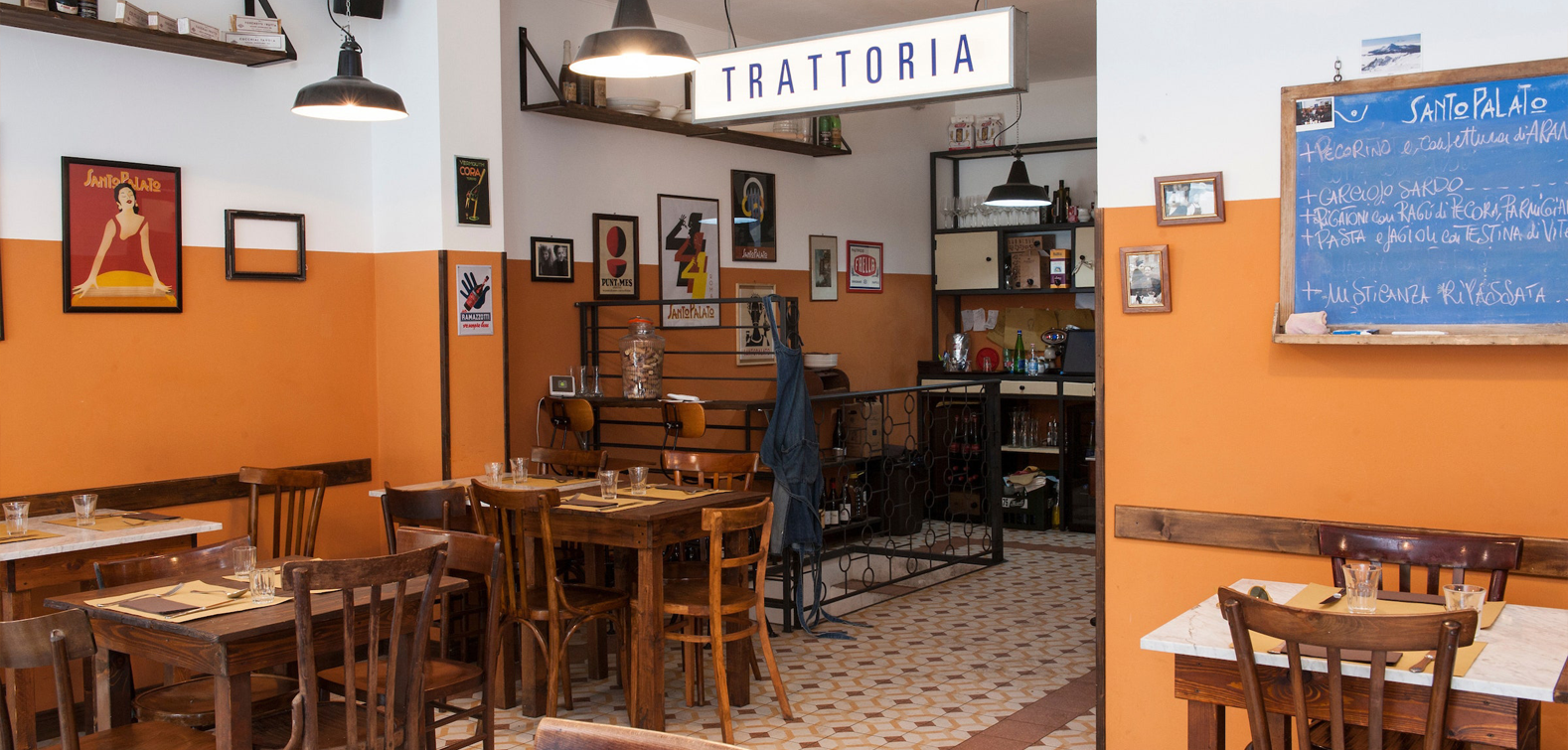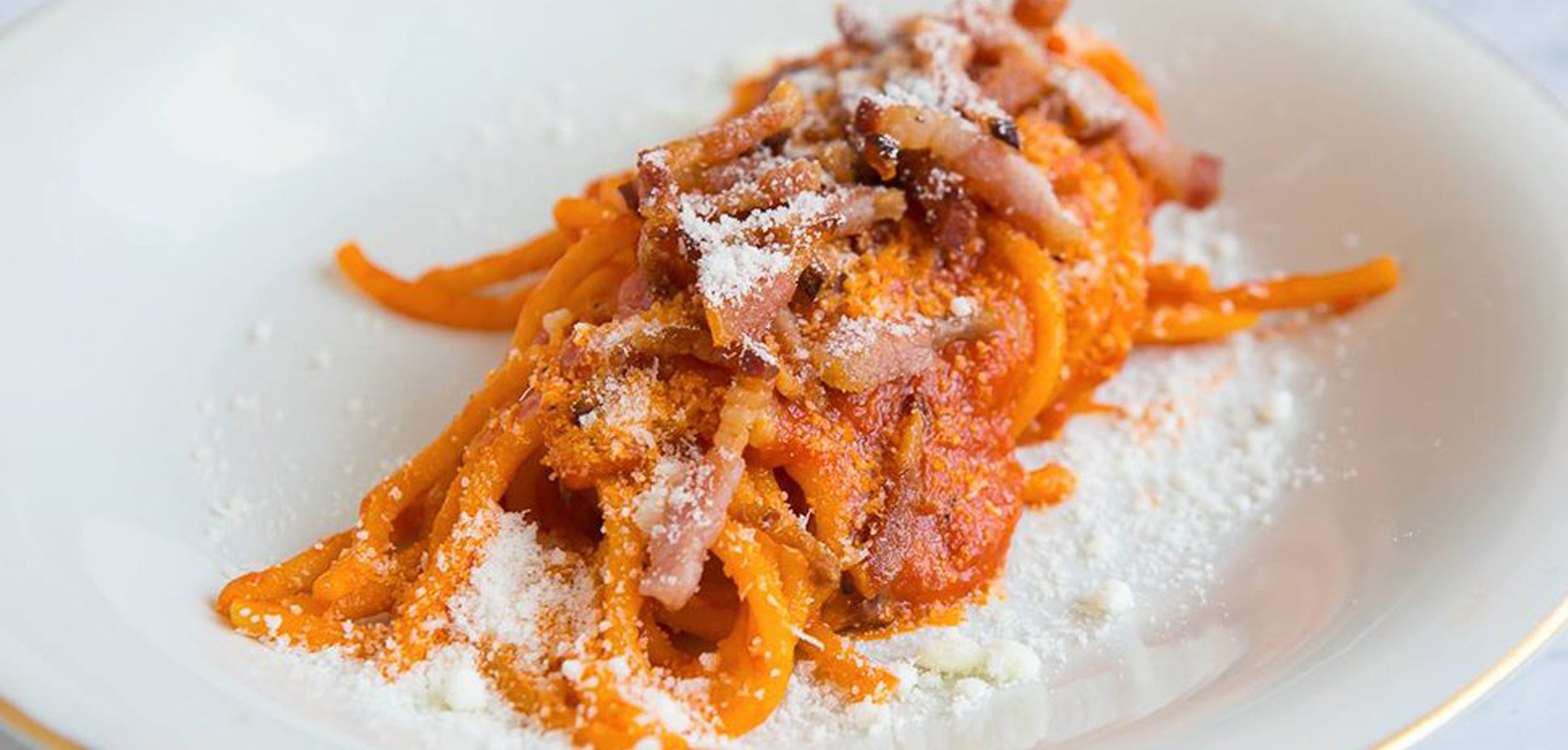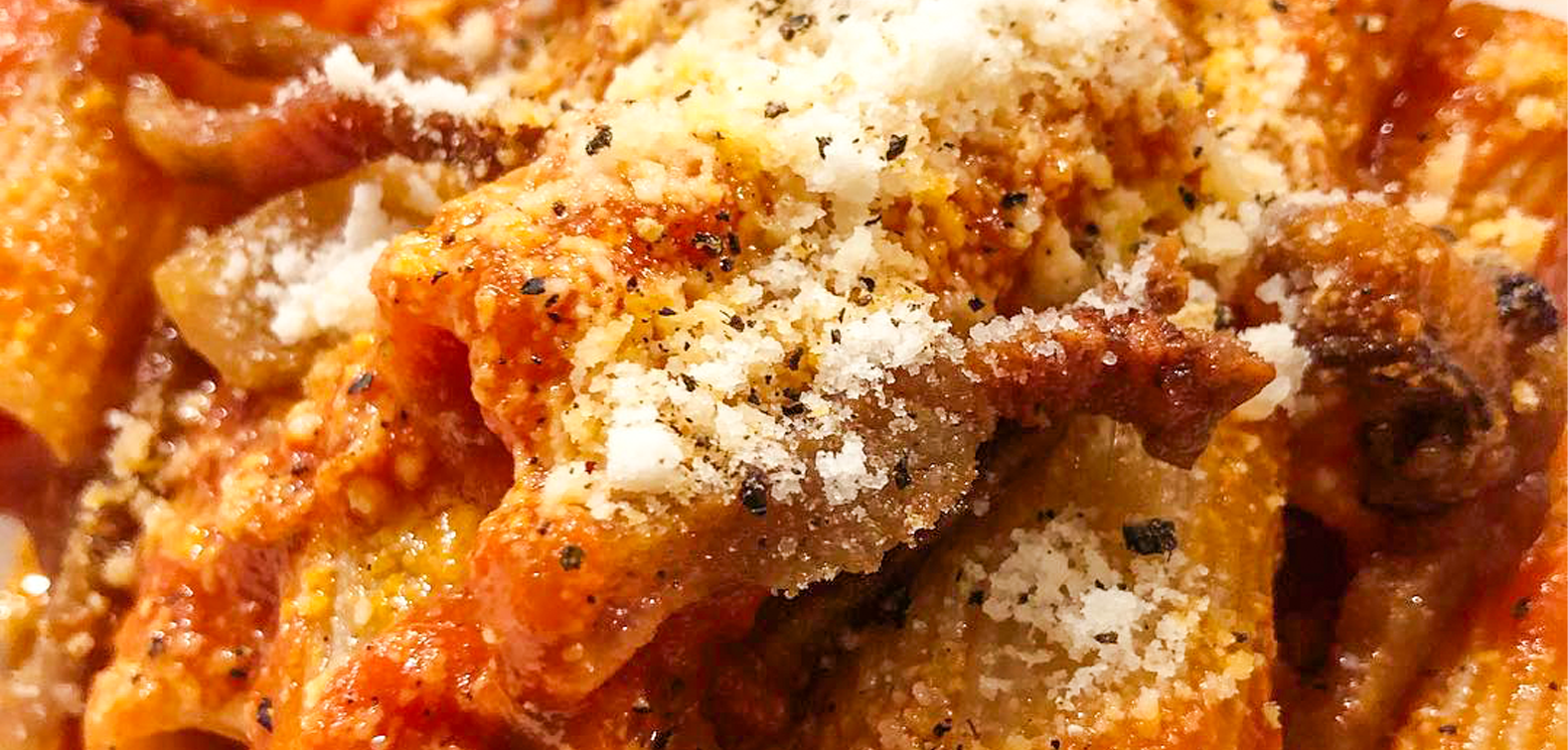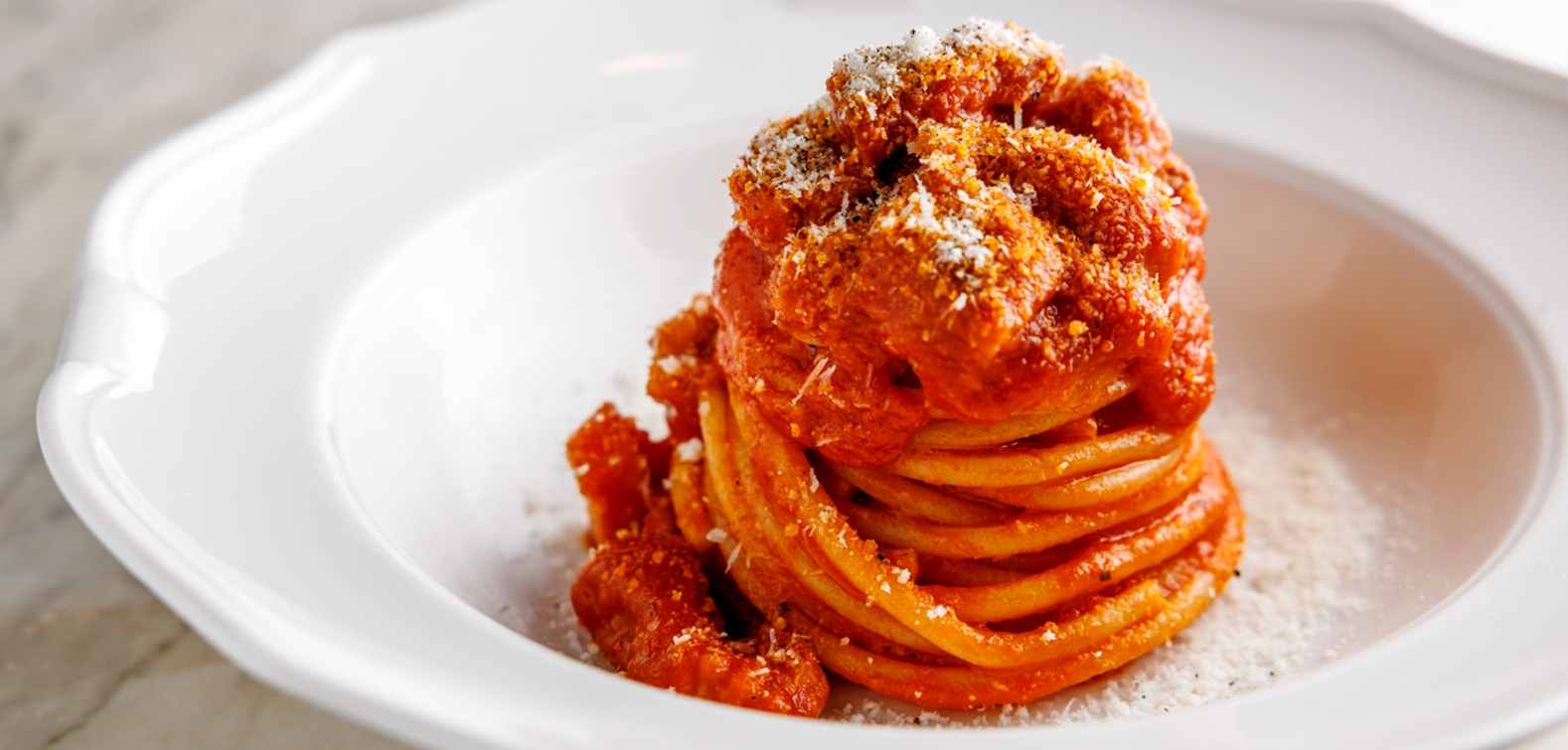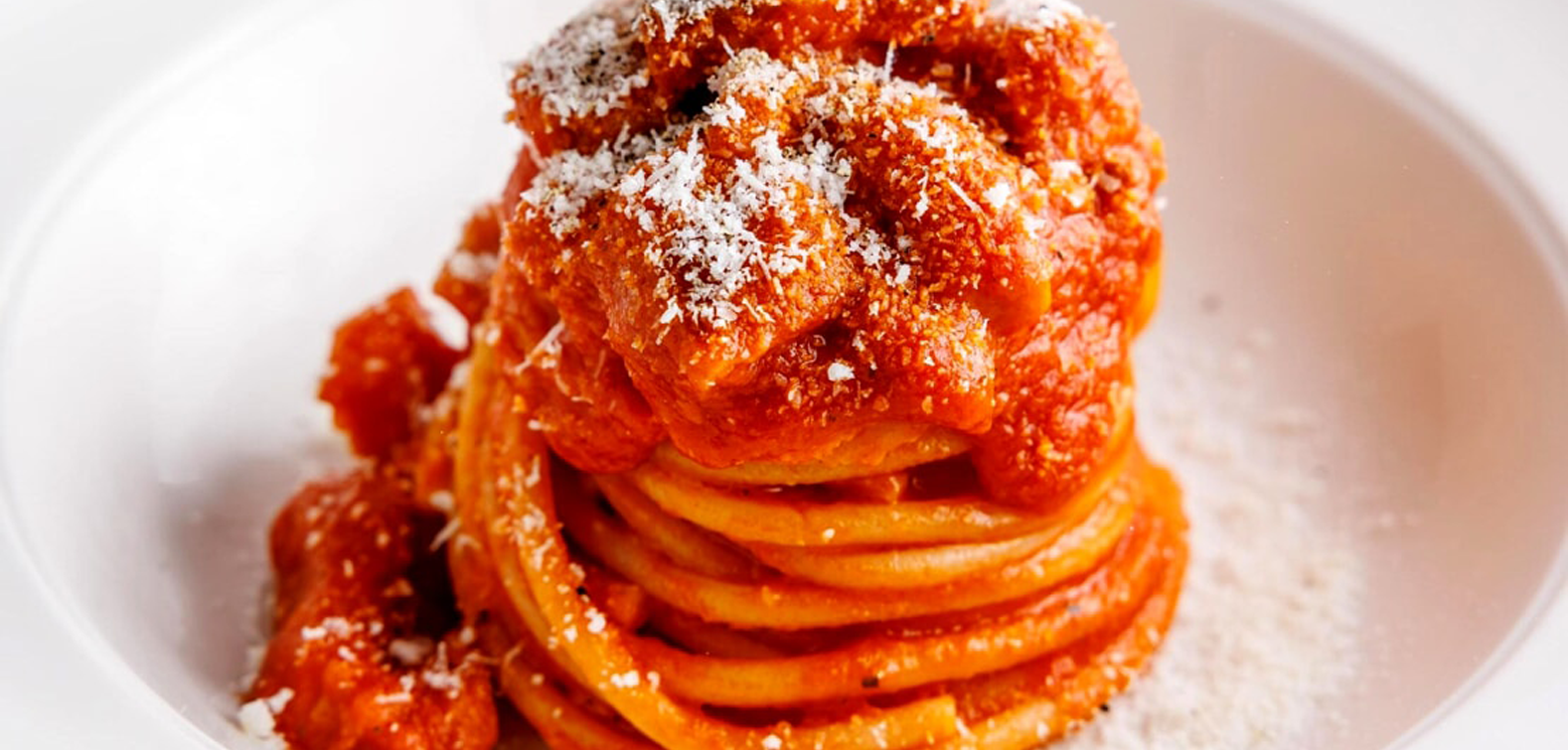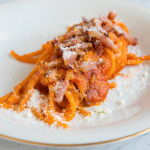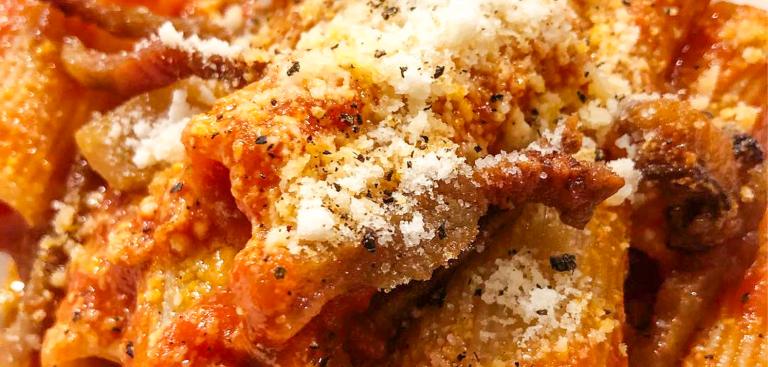
SantoPalato's Bucatini all'Amatriciana
Sarah Cicolini, chef and co-owner of Rome's highly acclaimed neo-trattoria SantoPalato, puts her magic touch on this Roman classic.
Chef Sarah Cicolini
Restaurant SantoPalato
Cuisine Italian
Servings 3
Ingredients
- 10 g Whole Sarawak Black Peppercorns
- 240 g Mature Pecorino Romano Freshly Grated
- 300 g Guanciale Cut into Strips (Lardons)
- 15 ml Red or White Wine Vinegar
- 950 ml Tomato Passata
- 450 g Dried Bucatini, Spaghettoni, or Rigatoni
- Sea Salt
Instructions
- Dry-roast the black peppercorns in a small frying pan over low heat, swirling until very fragrant (approximately 4–5 minutes). Cool then coarsely grind, preferably with a mortar and pestle, and combine with the pecorino.
- Cook the guanciale. Add the lardons to a large cold pan (without oil), set the heat to medium-low, stir occasionally, and cook until the fat renders and the guanciale is golden.
- While the guanciale cooks, heat a medium pot of water to a rolling boil and then lightly salt.
- Once the guanciale is finished cooking, drain on paper towels, leave ~30 ml (2 tbsp) liquid fat in the pan and an additional 15 ml (1 tbsp) in a small bowl.
- Add the vinegar to pan and cook until evaporated (~1 minute), and then add the tomato passata (or hand crushed tomatoes) and simmer until thickened (~15 minutes).
- While the passata is simmering, add the pasta to the boiling water and cook until very al dente (2–3 mins less than the pasta instructions), stirring occasionally.
- Once the pasta is finished cooking, transfer it to the pan with the sauce, reserving the pasta water, increase the heat to high, and cook for 2–3 minutes, stirring vigorously and constantly. Add pasta water as needed to prevent the pan from getting dry.
- Remove from the heat and then vigorously stir in the 15 ml of reserved fat, half the guanciale, and a handful of the pecorino/pepper mixture. Stir for 30–45 seconds.
- Add most of the remaining pecorino mixture, stirring constantly and loosening the sauce with a small amounts of pasta water as needed, until the sauce is coating the pasta. Salt to taste.
- Plate on the warmed dishes and garnish with the remaining pecorino/pepper mixture and guanciale.
Notes
This recipe is a take on the Roman version of amatriciana that does not use onions or garlic. In the original recipe from Amatrice, chili peppers are used in place of black pepper—a hallmark of the Roman version. Classic manuals of Roman cuisine also call for the use of onion and, in some cases, a small amount of garlic, whereas traditionally in Amatrice and neighboring Abruzzo, it is believed that where there is cheese, there should be no onion, garlic, or parsley.
Either mature Pecorino Romano or Pecorino di Amatrice can be used—the latter more common in versions from Amatrice. Likewise, either tomato passata or hand crushed peeled tomatoes (pomodori pelati) can be used—with passata more common in Rome and pelati more common in Amatrice.
Always use dried semolina pasta, as opposed to fresh egg (pasta all'uovo) or semolina pastas, for amatriciana. Bucatini is typical of the Roman version, whereas spaghettoni are more commonly used in Amatrice.
Warming of the serving dishes is essential to maintain the consistency of the sauce.
A dry white wine can be used instead of the white or red wine vinegar.
For the Amatrice version of amatriciana, watch Gabriele Perilli of Ristorante La Conca in Amatrice prepare his recipe.
For a rough guide to the four essential Roman pastas—cacio e pepe, gricia, carbonara, and amatriciana—see this chart.
